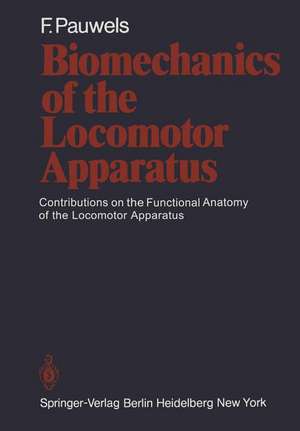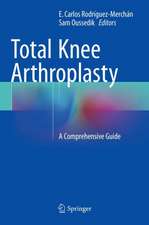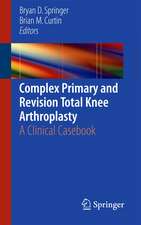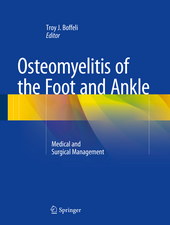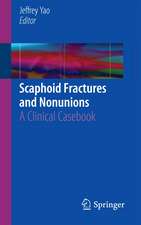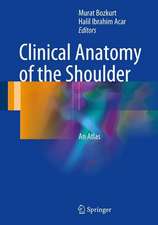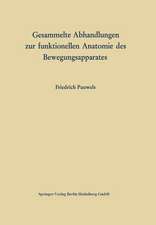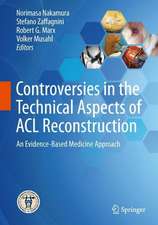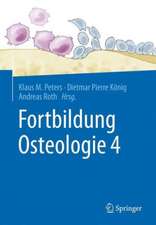Biomechanics of the Locomotor Apparatus: Contributions on the Functional Anatomy of the Locomotor Apparatus
Autor Friedrich Pauwels Traducere de Paul G. Maquet, Robert Furlongen Limba Engleză Paperback – 15 noi 2011
Preț: 732.73 lei
Preț vechi: 771.30 lei
-5% Nou
Puncte Express: 1099
Preț estimativ în valută:
140.22€ • 152.26$ • 117.79£
140.22€ • 152.26$ • 117.79£
Carte tipărită la comandă
Livrare economică 22 aprilie-06 mai
Preluare comenzi: 021 569.72.76
Specificații
ISBN-13: 9783642671401
ISBN-10: 3642671403
Pagini: 532
Ilustrații: VIII, 520 p.
Dimensiuni: 170 x 244 x 28 mm
Greutate: 0.84 kg
Ediția:Softcover reprint of the original 1st ed. 1980
Editura: Springer Berlin, Heidelberg
Colecția Springer
Locul publicării:Berlin, Heidelberg, Germany
ISBN-10: 3642671403
Pagini: 532
Ilustrații: VIII, 520 p.
Dimensiuni: 170 x 244 x 28 mm
Greutate: 0.84 kg
Ediția:Softcover reprint of the original 1st ed. 1980
Editura: Springer Berlin, Heidelberg
Colecția Springer
Locul publicării:Berlin, Heidelberg, Germany
Public țintă
ResearchCuprins
1. The Fracture of the Femoral Neck. A Mechanical Problem.- 2. Biomechanics of Fracture Healing.- 3. Stressing of the Pelvis and Especially of the Pelvic Joints. Contribution to Its Explanation.- 4. The Principles of Construction of the Locomotor System. Their Significance for the Stressing of the Tubular Bones.- 5. The Mechanical Significance of the Gross Structure of the Cortex in Normal and Pathologically Bent Tubular Bones.- 6. Principles of Construction of the Lower Extremity. Their Significance for the Stressing of the Skeleton of the Leg.- 7. Significance of the Muscular Forces for the Regulation of the Stressing of the Tubular Bone During Movement of the Limb.- 8. The Static Significance of the Linea Aspera.- 9. Critical Examination of the Work of Roux: “Description and Explanation of a Bony Ankylosis of the Knee”.- 10. The Significance of the Mechanical Factors Acting on the Elbow Joint for the Carrying Capacity of the Flexed Upper Limb.- 11. On the Distribution of the Density of Cancellous Bone in the Upper End of the Femur and Its Significance for the Theory of the Functional Structure of Bone.- 12. The Functional Adaptation of Bone Through Growth in Length.- 13. The Structure of the Superficial Fibre Layer of the Articular Cartilage of the Glenoid Cavity as an Example of an Embodied Stress Field.- 14. A New Theory Concerning the Influence of Mechanical Stimuli on the Differentiation of the Supporting Tissues.- 15. The Distribution of Pressure in the Elbow Joint Together with Fundamental Remarks on Joint Pressure.- 16. The Significance of a Tension Band for the Stressing of the Tubular Bone with Application to Compression Osteosynthesis.- 17. Contribution to the Study of Functional Adaptation of the Cortex of a Tubular Bone. An Examination of Three FemoraDeformed by Rickets.- 18. Biomechanics of Bone Grafting.- 19. Short Survey of the Mechanical Stressing of Bone and Its Significance for Functional Adaptation.- 20. The Significance of the Medullary Cavity for the Mechanical Stressing of the Tubular Bone.- 21. A Clinical Observation as Example and Proof of Functional Adaptation of the Bone Through Longitudinal Growth.- 22. On the Modelling Effect of the Functional Adaptation of the Bone.
